Results 7,281 to 7,290 of 12095
Thread: Anandtech News
-
08-28-17, 10:10 AM #7281
Anandtech: Intel Announces Movidius Myriad X VPU, Featuring ‘Neural Compute Engine’
Today, Intel subsidiary Movidius is announcing the Movidius Myriad X vision processing unit (VPU), a low-power system-on-chip (SoC) intended for deep learning and AI acceleration in vision-based devices such as drones, smart cameras, and VR/AR headsets. This follows up on last month’s launch of the Myriad 2 powered Movidius Neural Compute Stick. As for the Myriad 2, the Myriad X will coexist alongside its predecessor, which was first announced in 2014. Movidius states that the Myriad X will offer ten times the performance of the Myriad 2 in deep neural network (DNN) inferencing within the same power envelope, while the Myriad 2 will remain a lower performance option.
Under the hood, the Myriad X SoC features what Movidius is calling a Neural Compute Engine, an on-chip DNN accelerator. With it, Movidius states that the Myriad X can achieve over one trillion operations per second (TOPS) of peak DNN inferencing throughput, in the backdrop of the Myriad X’s theoretical 4+ TOPS compute capability.
In addition, the Myriad X has four more C-programmable 128-bit VLIW vector processors and configurable MIPI lanes from the Myriad 2, as well as expanded 2.5 MB on-chip memory and more fixed-function imaging/vision accelerators. Like the ones found in the Myriad 2, the Myriad X’s vector units are proprietary SHAVE processors optimized for computer vision workloads. The Myriad X also supports the latest LPDDR4. In an accompanying launch video, Movidius locates the Myriad X functions on a stylized dieshot.
Another new function in the Myriad X is 4K hardware encoding, with 4K at 30 Hz (H.264/H.265) and 60 Hz (M/JPEG) supported. Interface-wise, the Myriad X brings USB 3.1 and PCIe 3.0 support, both new to the Myriad VPU family. All this is done within the same ~2W power envelope as the Myriad 2.
While specifics were not disclosed, the Myriad X VPU comes with an SDK that includes a neural network compiler and “a specialized FLIC framework with a plug-in approach to developing application pipelines.” In any case, given the hardware commonalities, the Myriad X will probably have a development kit similar to the Myriad 2’s Myriad Development Kit (MDK). At this time, there were no details about the reference kit hardware.
As mentioned earlier, the Myriad 2 will not be replaced by the Myriad X. Last January, the Myriad 2 was described as costing under $10; based on the presumably higher cost process and additional hardware features, the Myriad X will likely command a higher price for the higher performance.
More...
-
08-28-17, 10:10 AM #7282
Anandtech: MediaTek Unveils Helio P23 & Helio P30 SoCs: Premium Midrange for Q4'17 &
This morning MediaTek is taking the wraps off of their latest SoCs for the midrange phone market. Dubbed the Helio P30 and Helio P23, these are robust upgrades to the P20 series launched over the last year and a half, retaining the same octa-core Cortex-A53 CPU architecture but upgrading many other facets of the SoCs, including the GPUs and modems. MediaTek will be rolling these out next quarter, with the P23 going worldwide while the P30 starts its life in China.
MediaTek is of course one of the industry’s most prolific SoC vendors, and these days one of a handful of independent smartphone SoC vendors not directly tied to a handset vendor. As a result their chips tend to show up frequently in the GSM/LTE market, especially in the midrange market where they have made a name for themselves. The Helio P-series is the company’s bread and butter in this space, targeted at what the company calls the “Premium Performance” market – calling for still price-conscious SoC designs that incorporate typical midrange core processor blocks (e.g. Cortex-A53) but pair that with higher-end ancillary features.
For SoC vendors like MediaTek, the midrange market has long been considered a good mix of volume and profitability – a growing user base that can afford something better than bare-featured (and cut-throat priced) low-end SoCs. It’s also one that MediaTek expects is going to continue to grow as carrier and government subsidies fade away and consumers have to bear the full cost of the phone.
Moving on to the hardware itself, the Helio P30 and P23 are the follow-ups to the Helio P25 and P20, which were launched in February of 2017 and 2016 respectively. Essentially the same design for both SoCs, the P25 added a clockspeed bump as a mid generation upgrade for the family, offering better performance with the same feature set. The new P30 and P23, on the other hand, are more robust upgrades for the family, and while they’re not entirely detached from the P20 series parts we’ve seen so far, they incorporate new features and newer generation IP blocks to bring the family closer to the more recently launched Helio X30.
Relative to the P20/P25, the core CPU configuration has not changed. MediaTek is still using an octa-core Cortex-A53 setup, composed of two quad-core clusters. On both SoCs the performance cluster is clocked at 2.3GHz, while the efficiency cluster is clocked at 1.65GHz. Relative to the P25, this is actually a bit of a pullback in terms of the performance cluster clockspeed – from 2.6GHz to 2.3GHz – while the efficiency cluster is slightly faster. The Cortex-A53 is the tried and true workhorse of the midrange market due to its small size and low power consumption, and while its successor will come in the form of the Cortex A55, MediaTek’s new SoCs are a bit too early to integrate it. Instead, it looks like the CPU performance of these new P-series SoCs will be fairly close to the P20 and P25.MediaTek 2017 Q4 SoC Lineup SoC P20 P25 P23 P30 X30 CPU 2xA73 - - - - 2.6 GHz 4xA53
(Hi)2.3 GHz 2.6 GHz 2.3 GHz 2.3 GHz 2.2 GHz 4xA53
(Low)1.6 GHz 1.6 GHz 1.65 GHz 1.65 GHz - 4xA35 - - - - 1.9 GHz Memory LPDDR3 1 x 32-bit @ 933 MHz - - LPDDR4X 2 x 16-bit @ 1600 MHz 4x 16-bit @ 1866MHz GPU T880MP2
@900MHzG71MP2 @770MHz G71MP2 @950MHz 7XTP-MT4 @800MHz Encode 2160p30 H.264 2160p30 H.264 & HEVC 2160p30 H.264, HEVC, & VP9 Decode 2160p30 H.264 & HEVC 2160p30 H.264, HEVC, & VP9 Camera
/ISPSingle 24MP 24MP 24MP 25MP 28MP Dual 13 + 13MP 13 + 13MP 13 + 13MP 16 + 16 MP 16 + 16 MP Modem LTE Cat 6 300/50Mbps LTE Cat 7/13 300/150Mbps
DSDS w/Dual VoLTELTE Cat 10/13 450/150Mbps Vision Processing Unit No Yes Yes Mfc. Process TSMC 16nm TSMC 10nm
However outside of the CPU clusters, almost every other part of the SoC has been updated for the P23 and P30. On the GPU side, for example, MediaTek is moving from ARM’s last-generation Mali T880 design to their current-generation Mali-G71 GPU. Based on ARM’s Bifrost GPU architecture, the Mali-G series is a major overhaul in how the company designs their GPUs. MediaTek is using a G71MP2 configuration in both SoCs, similar to the use of a T880MP2 configuration in the last-generation parts, with the P23’s GPU clocked at 770MHz, while the P30 will be clocked at a significantly higher 950MHz. Given both the architecture and the clockspeed differences, it will be interesting to see how the new Helio P-series SoCs compare to the existing P20 parts.
However if you want to get into the upgrades and enhancements that MediaTek considers most important, it’s video capture, cameras, and their LTE modem.
With regards to video capture, MediaTek has also upgraded the video encode and decode blocks, but only the P30 gets outright new functionality. The P23 retains the same 4Kp30 H.264 recoding capabilities as its predecessor, along with 4Kp30 H.264 and HEVC decoding. The P30 takes things up a notch, adding HEVC to its encoding capabilities.
Meanwhile on the camera front, the P23 and P30 improve upon the P20/25’s existing ISP capabilities. First introduced in the P25 was official support for dual cameras, and the latest SoCs extend that to the entire range. The P23 can support 13MP + 13MP cameras (or a single 24MP), while the P30 increases that to 16MP + 16MP (single 25MP). Dual camera support has by far been the marquee feature for premium midrange and high-end phones this year, so MediaTek is making sure they’re well-prepared here.
The new SoCs also bring over MediaTek’s Imagiq 2.0 feature set and technologies from the Helio X30, including its hardware camera capture control unit, which among other things adds support for instant auto exposure, various noise reduction technologies, and MediaTek’s latest EIS tech. In the case of the P30, this also means that MediaTek has brought over their Vision Processing Unit, a 500MHz Tensilica DSP that’s specifically used for additional image processing features. The main use for the VPU is powering OEM-developed features and tuning settings that are typically used to customize/differentiate their individual products, however the VPU can also offload some of the work that would be done on the GPU or CPU.
As for the modem, both the P23 and P30 get a new LTE Category 7/13 modem from MediaTek. This modem supports 300Mbps down and 150Mbps up, tripling the available upload speeds versus the P23 and P30. Not listed on the official spec sheets, but confirmed by the company, the new modem also has some additional network support features, such as support for T-Mobile USA’s 600MHz LTE bands, improved LTE carrier aggregation, and High Power UE support for TDD LTE, allowing for higher transmit powers on supported networks.
However what’s likely the biggest feature here is LTE support on both the primary and secondary SIMs when in Dual Sim, Dual Standby (DSDS) mode. Prior MediaTek (and virtually all other) DSDS designs limited the second SIM to 2G/3G support, whereas the P23 can connect to both SIMs’ networks over LTE. This means that the phones can support much higher quality voice (VoLTE) and video (ViLTE) on the second SIM, eliminating the quality tradeoff of the second SIM and essentially bringing both networks to parity. While this feature has never been impossible on a technical level, LTE support for the second SIM has routinely been cited as a power consumption liability, so this is an interesting development, and one that indicates that MediaTek has saved enough power elsewhere to make it viable. Otherwise, with MediaTek’s P-series SoCs being especially popular in Asia and other regions where dual SIMs are common, the company thinks that this is going to be an especially popular feature.
On that note, while both SoCs are being made on TSMC’s 16nm process like their predecessor, MediaTek tells me that they have none the less been working to optimize the SoCs’ power consumption. The company isn’t throwing specific numbers around, but both the P23 and P30 should have lower power consumption than their predecessors. For the P30 this isn’t too surprising since its predecessor (P25) was surprisingly highly clocked, however this is a more interesting statement for the P23. The P-series was designed and positioned, in part, to be power-efficient from the beginning, and especially as phones have reached “good enough” performance for basic users, the focus has turned to even further improving power efficiency.
Finally, let’s talk about the hardware rollout. MediaTek will be releasing both the P23 and P30 in Q4 of this year; the P23 will get a global launch, while the P30 will be limited to China, at least for the start. In practice even the P23 will likely show up in Asia first, as is traditionally the case, however MediaTek says that there is global interest in the SoC and it is being certified globally. Demand for the P30 on the other hand is more localized to China – owing in part to its price – so that’s where the company is starting. Though MediaTek hasn’t ruled out a more global launch later on, if handset makers should demand it.
Gallery: MediaTek P23 & P30 Slide Deck





More...
-
08-29-17, 07:44 AM #7283
Anandtech: Netgear Nighthawk X6S EX8000 Brings Orbi Tri-band Wi-Fi to Range Extenders
?Netgear's Orbi system has proved to be one of the most popular kits in the emerging mesh / Wi-Fi system market. While Wi-Fi systems are not for everybody (for example, folks living in apartments certainly don't need one), there is a segment of the target market that has been loath to upgrade to them. Primary reasons for this might include the high entry price, not being in a position to replace the ISP-provided gateway, or, due to the consumer's pre-existing investment in a high-end flagship router. Today, Netgear is introducing the Nighthawk X6S EX8000 range extender based on the same platform as that of the high-end Orbi router.
On the specifications front, the EX8000 is an AC3000-class tri-band Wi-Fi range extender, using a 4x4 dedicated backhaul link to the consumer's primary router. Like the Orbi router, the EX8000 also uses the IPQ4019 SoC in the dual-band dual-concurrent configuration - 2x2 2.4 GHz + 2x2 5 GHz, along with a 4x4 5 GHz QCA9984 PCIe radio. It has MU-MIMO support and all other features that consumers have come to expect from a high-end router. While the default configuration is that of a range extender, the product can also be configured as an access point in the case of a wired backhaul (the EX8000 has four gigabit LAN ports). Obviously, in the access point mode, we have two 5 GHz and one 2.4 GHz SSID available. In the range extender mode, the EX8000 can be configured to present the same SSID as the primary router for both bands. The 802.11k fast roaming protocol is also supported. This allows supported client devices to move from the router to the range extender without dropping the connection.?
The EX8000 targets the aforementioned 'yet-to-upgrade' segment using the following marketing approach:
- High entry price of Wi-Fi systems - The tri-band EX8000 range extender / access point is being launched with a MSRP of $230, which puts it in the range of mid-range 802.11ac Wi-Fi routers.
- Consumers stuck with ISP gateways - One of the main selling points of the EX8000 is its compatibility with virtually any modern-day Wi-Fi router or gateway, including those that can't be set in bridge mode.
- Consumers with a pre-existing flagship router - Depending on the need to address Wi-Fi dead spots, Netgear is hoping that consumers see the EX8000 as a flagship range extender that costs around half of the flagship router's price.
Netgear's marketing material also talks of a patented 'Fastlane3' technology, which basically refers to the use of a dedicated backhaul (fast link between the router and the range extender), the use of three simultaneous bands (2x 5 GHz, 1x 2.4 GHz) with six antennas, and the AC3000 tag for the product.
Netgear is not the first vendor to release a range extender based on Qualcomm's mesh networking tri-band Wi-Fi platform. Amped Wireless launched the HELIOS-EX AC2200 tri-band Wi-Fi range extender (with its trademarked DirectLink moniker for the dedicated link feature that is also used by the Netgear EX8000) The HELIOS-EX AC2200 extender is priced at $180, but, for the lower cost, the dedicated backhaul scales back from the EX8000's 4x4 to a 2x2 link. The Netgear Nighthawk X6S appears to be the most powerful range extender currently in the market, and that may well justify the $230 price tag when it comes to the market in early September.
Gallery: Netgear Nighthawk X6S EX8000 Brings Orbi Tri-band Wi-Fi to Range Extenders





More...
-
08-29-17, 08:43 AM #7284
Anandtech: The Crucial BX300 (480GB) SSD Review: Back To MLC
The Crucial MX300 has done well over the past year covering a wide segment of the consumer SSD market for Micron, with entry-level pricing but mainstream performance. Micron is now introducing a second consumer SSD with 3D NAND, and bringing MLC back to the BX series. The resulting BX300 is not much cheaper than the MX300, but is well positioned to be the best-performing and most cost effective choice for a small SSD.
More...
-
08-29-17, 10:53 AM #7285
Anandtech: Intel Launches Xeon-W CPUs for Workstations: Skylake-SP & ECC for LGA2066
On the professional side of the CPU space, Intel’s new Xeon Scalable Processor family, based on the Skylake-SP architecture, is suiting up against the new EPYC processors from AMD. Part of Intel’s Xeon-SP launch was a rebranding of their product stack: gone are E5 and E7 families, and now Platinum, Gold, Silver and Bronze make for a confusing conversion. With this announcement, Intel also gave the image that now consumer and professional platforms were separate: no longer were Xeons welcome in consumer sockets. However as it turns out, this would not quite be the case.
Today Intel is taking the wraps off of their new Xeon-W family of processors, which will be their new brand for workstation-class processors. With the Xeon-W announcement today, Intel is bridging the gap between servers and consumer processors (in name at least) with a direct replacement for the old E5-1600 series, which will see Skylake-SP Xeons come to the LGA2066 socket with additional professional-level features in tow.
Historically, the E5-1600 series were identical processors to the E5-2600 series, except without the dual socket capabilities and consequently priced more appropriately for single socket workstations. Meanwhile over the last few generations, the consumer and enterprise platforms shared a socket, which made cross compatibility fairly easy.
With the new Xeon-SP processors, however, the enterprise platform went up to Socket LGA3647. This new socket is a far cry from the consumer LGA2066, losing a common platform in exchange for more memory channels and other features such as Omnipath. With a complete division between consumer and enterprise, there was no way to bring features such as ECC and vPro down into more consumer friendly environments.
Today’s launch of Xeon-W fixes this, although you probably still need a new chipset. As a replacement for the E5-1600 series, the Xeon-W CPUs will feature parts from 4 cores up to 18 cores, support up to 512GB of ECC RDIMM/LRDIMM memory, support dual 512-bit FMAs throughout the stack, and peak turbo clocks of 4.5 GHz.
In essence, these are Xeon versions of the current Skylake-X (Core i9) processors with all the pro features enabled, such as the extended memory support, vPro, Intel’s AMT, and the standard enterprise Reliability, Serviceability and Availability (RAS) features. They will require a new chipset, the C422 chipset, and despite the common LGA2066 socket, it seems unlikely that this will work with the consumer X299 chipset (reaffirming the split we see with the E3-1200 v5/v6 series which require the C236 chipset and will not work with the Z170 chipset). As a result, we are likely to see most of the major motherboard manufacturers pump out at least one version of an enterprise board to cover this market.New Intel Xeon-W Processors (LGA2066) Cores Base
Freq.Turbo
2.0L3
(MB)L3/core
(MB)TDP Price Xeon W-2195 18/36 2.3 GHz 4.3 GHz 24.75 1.375 140 W TBD Xeon W-2175 14/28 TBD TBD 19.25 1.375 140 W TBD Xeon W-2155 10/20 3.3 GHz 4.5 GHz 13.75 1.375 140 W $1440 Xeon W-2145 8/16 3.7 GHz 4.5 GHz 11.00 1.375 140 W $1113 Xeon W-2135 6/12 3.7 GHz 4.5 GHz 8.25 1.375 140 W $835 Xeon W-2133 6/12 3.6 GHz 3.9 GHz 8.25 1.375 140 W $617 Xeon W-2125 4/8 4.0 GHz 4.5 GHz 8.25 2.063 120 W $444 Xeon W-2123 4/8 3.6 GHz 3.9 GHz 8.25 2.063 120 W $294
Starting at the bottom of the new Xeon-W product stack, we find something interesting: Intel is releasing a pair of four core parts that have 8.25MB of L3 cache, rather than the 5.5MB we would expect from a 1.375MB/core Skylake-SP design. This indicates that these parts retain access to some of the L3 cache attached to the disabled cores, making them particularly well suited for software that is licensed per CPU core and consequently needs the the highest single-threaded performnace possible. There are two 6 core members of the stack, which differ solely on clock speed. This is then followed by an 8 core, a 10-core, a 14-core and an 18-core, with no 12-core or 16-core present (although if launched, these are likely to be called the W-2185 and W-2165). All the parts will support 48 PCIe 3.0 lanes from the processor, suitable for 2x GPU and 3x PCIe storage direct from the CPU without going out to the chipset (in the consumer Skylake-X product line, the two bottom SKUs only have 28 PCIe lanes, and the rest have 44). Every processor in the Xeon-W stack sits at 140W, except the quad cores at 120W. By contrast, Skylake-X goes up to 165W. It is also worth noting that the Xeon-W processors only support Turbo Boost 2.0 rather than Turbo Boost Max 3.0 and its "favored core" underpinnings. And as with past Xeon processors, Xeon-W processors are also likely to be locked.
There are several obvious comparisons that can be made between the Xeon-W family and both the consumer Skylake-X and the server Xeon-SP platforms. Intel’s goal here is to hit something in the middle: an increase in price over Skylake-X gets you more memory support, ECC, more PCIe lanes, and management features, but doesn’t go the full way to six-channels of DDR4 or multi-socket support. Not all of the Xeon-W parts have specifications and prices yet, but the 8-core processor is a good place to do comparisons.Top SKU Comparison Features Skylake-X
(i9-7980XE)Xeon-W
(Xeon W-2195)Skylake-SP
(Xeon 8180/M)Platform X299 C422 C620 Socket LGA2066 LGA2066 LGA3647 Cores/Threads 18 / 36 18 / 36 28 / 56 Top Base/Turbo 3.3 / 4.3 2.3 / 4.3 2.5 / 3.8 GPU PCIe 3.0 44 48 48 DRAM / DDR4 128GB
UDIMM
Quad-Channel512GB
RDIMM+LRDIMM
Quad Channel768GB/1536GB
RDIMM+LRDIMM
Six ChannelTDP 165W 140W 205W Price $1999 TBD $10009 / $13011
The consumer Core i7 has fewer PCIe lanes and the most limited DRAM support, but it's the cheapest. Conversely, the Xeon Gold CPU is easily the most expensive, but it supports up to four sockets, has more L3 cache per core overall, and gets the greatest memory capacity, while incurring a slightly higher TDP in the process. The Xeon-W then sits neatly in the middle, taking advantage of high clock frequencies and pro features with a small bump in price, without forking over for multi-socket support.8-Core Comparison Features Skylake-X
Core i7-7820XXeon-W
Xeon W-1245Skylake-SP
Gold 6144Platform X299 C422 C620 Socket LGA2066 LGA2066 LGA3647 Cores/Threads 8 / 16 8 / 16 8 / 16 Base/Turbo 3.6 / 4.3 3.7 / 4.5 3.5 / 4.2 GPU PCIe 3.0 28 48 48 DRAM / DDR4 128GB
UDIMM
Quad-Channel512GB
RDIMM+LRDIMM
Quad-Channel768GB
RDIMM+LRDIMM
Six ChannelTDP 140W 140W 150W Sockets 1 1 Up to 4 Price $599 $1113 $2925
Of course, we can put the Xeon W-2145 up against AMD’s Threadripper 1900X and EPYC 7401P too:
For both parts that have the same core counts, Intel has the frequency advantage (and the performance advantage) and the power advantage, but AMD's chips have 60 PCIe lanes, more memory support, and are cheaper. When the 1950X doubles the cores but reduces the frequency, it still comes out cheaper than the Xeon W. Intel still has dual 512-bit FMAs/AVX-512 support, which Intel says is a big bonus in this market, and will point to its single thread performance.Comparison Features Xeon-W
Xeon W-1245AMD Ryzen
TR 1900XAMD EPYC
7401PPlatform C422 X399 - Socket LGA2066 TR4 SP3r2 Cores/Threads 8 / 16 8 / 16 16 / 32 Base/Turbo 3.7 / 4.5 3.8 / 4.0 2.0 / 3.0 GPU PCIe 3.0 48 60 60 DRAM / DDR4 512GB
LDIMM+RDIMM
Four Channel128GB
UDIMM
Four Channel2 TB
RDIMM + LRDIMM
Eight ChannelL3 Cache 11.00 MB 32 MB 64 MB TDP 140W 180W 175W Price $1113 $549 $1075
While today is the formal announcement of the Xeon-W family, Intel has not announced much in the way of release details other than that the 14/18 core parts will be available in Q4. The rest are likely to come to market sooner, and we have requested details on retail availability. We’ve also had a lot of requests for workstation level testing or Xeon vs EPYC, and we’re in touch with both companies to get our hands on processors as soon as we can.
To clarify, we're still waiting on information about CPU/chipset support, and if Xeon-W will be supported in X299 motherboards. We will update this piece when we get that information.
Gallery: Intel Launches Xeon-W CPUs for Workstations: Intel Slide Deck





More...
-
08-29-17, 12:29 PM #7286
Anandtech: Silverstone Announces Two New SFX Power Supplies: SX500-G & SX650-G
Small Form Factor (SFF) sized PCs have been around for many years and its popularity seems to be growing. Consumers have more choices today than just a few years ago. Be it cases, motherboards, graphics cards, or power supplies, there are more options out there than ever. Some of these systems require smaller than a standard ATX sized power supply. One of the more popular form factors for these systems is named SFX. The SFX dimensions are notably smaller than ATX allowing PSUs to fit in small cases while still delivering adequate power and having appropriate connectivity.
Silverstone started in the high-performance SFX market in 2012 when it released the 450W ST45SF-G power supply. Fast forward a couple of years and a few other PSU releases in that time brings us to now. Today, Silverstone revealed two new SFX power supplies, the 80 Plus Gold rated SX500-G and SX650-G, offering larger fans for quiet operation, more wattage in the same space, and refined internals while still conforming to the dimensions of the SFX form factor. Both new PSU's OEMs are said to be High Power, while the older ST45SF-G and SX600-G are Enhance units.
Silverstone offers SFX PSUs from 300W in the ST30SF V2.0 up to 650W in the true SFX form factor (up to 100mm/3.9" deep) as well as 700/800W models using SFX-L form factor which extends the length to 130mm. Not resting on past accolades, Silverstone says they have improved those designs by putting more power in the same amount of space and using a larger 92mm fan to keep noise levels down. The fan curve has also flattened out quite a bit staying below 1000 RPM through 50% load. The fan starts to ramp up aggressively around the 75% mark topping out over 3500 RPM. Silverstone says the 92mm fan has a 18dbA minimum rating so it should be quiet using the less aggressive fan curve staying below that ramp up point. While users will not find a 'fan off' mode, Silverstone does say they are quieter than their less powerful predecessors. In our review, the SX600-G did struggle to deliver its maximum power inside a hot environment and had difficulties reaching its efficiency certification levels. Due to the smaller fan working hard, the noise levels were not good. Hopefully, a platform change combined with the larger fan mitigates these issues.
Ratings and details about the units are below, but both use a single 12V rail. The SX500-G is rated for 41.7A while the SX650-G is 54.2A on the 12V line. 2.5A on the +5Vsb (both PSUs). Silverstone mentions they use all Japanese capacitors and fit within a "strict" +/- 3% voltage regulation along with low ripple and noise. 3% regulation isn't shooting for the stars, but these are not meant to me Tier1A power supplies either. In the PSU arena, power per liter, or power density, has seemingly become a buzz-word as of late telling us how much power can fit inside a 1L volume. Silverstone touts the 500W model is at 630W /L while the 650W model is 819W /L. Impressive as it may be, that much power in a small space, it doesn't tell us much.
For connectivity, the SX500-G and SX650-G are said to come with more connectors to be used in a wider variety of system configurations. I am not sure how much hardware people are fitting in SFF cases where these PSUs are typically used, but it is a welcome thing to have more than one needs than to not have enough. Both units are fully modular and use their flexible flat cables which Silverstone says allows for tighter folding and better cable management. The 500W unit has two 6+2-Pin PCIe connectors (400mm/500mm in long), while the 650W has four. Both units come with a single 20/24-Pin motherboard connector (300mm), and a single 4/8-pin EPS/ATX 12V connector (400mm). There is connectivity for six SATA ports, three Molex, and one floppy connector. If using this form factor in a larger case, Silverstone does offer a longer, standard length cable set, the PP05-L, which is purchased separately. More details are found in the specifications table below.
Pricing for the SX500-G is 92.50€($99.99) and the SX600-G is 116.90€($129.50) both excl. VAT. Availability starts August 29th in the EU and sometime next week in the states.Silverstone SX500-G and SX650-G Specifications SX500-G SX650-G Rated Combined Rated Combined +3.3V 22A 110W 22A 110W +5V 22A 22A +12V 41.7A 500W 54.2A 650W -12V 0.3A 3.6W 0.3A 3.6W +5Vsb 2.5A 12.5W 2.5A 12.5W Total Power 500W 650W Connector Type SX500-GSX650-GATX 24 Pin 1 EPS 4+4 Pin 1 PCIe 6+2 Pin 2 4 SATA 6 4P Molex 3 Floppy 1
Gallery: Silverstone SX500-G and SX650-G





Related Items:
- The Enermax Revolution SFX 650W PSU Review: Compact and Capable
- The Silverstone SX-600G SFX PSU Review
- Be Quiet! Reveals Straight Power 11, SFK-L PSUs
- FSP Dagger 500W and 600W SFX PSUs Come To Market: From $99 with 80Plus Gold
- The Silverstone ST30SF & ST45SF SFX Power Supply Review
More...
-
08-29-17, 02:47 PM #7287
Anandtech: Dell Enters VR Arena With "Visor" HMD
This week, Dell is announcing its own version of a virtual reality head mounted display (VR HMD) at IFA, the Dell Visor. With their first VR product, Dell is joining the ranks of other mainstream manufacturers that are adopting Microsoft’s Windows Mixed Reality platform to bring an HMD to market.
The Dell Visor features two 90Hz 1440 x 1440 LCD panels (for a total resolution of 2880 x 1440) that can “flip up” to let you see the real world around you without completely removing the headset. The faceplate is well cushioned, and the headband is easily adjusted using a thumbwheel. The company claimed that it's comfortable to wear, even with glasses, but like other VR headsets, this will likely vary from person to person.
Similar to Acer’s Mixed Reality HMD, the Dell Visor is a tethered headset (USB and HDMI cable) that connects to a Windows PC (with at least the baseline specifications) and features inside-out 6DoF tracking; the headset doesn’t require external cameras or lighthouses to track its position in space. Boundaries are setup by outlining the play area with the HMD, but maximum tracking space wasn’t disclosed.
When asked what the main difference between the Dell Visor and its competition was, a representative explained, “Ours is white.” Indeed, the Visor features a white (almost Apple-esque) finish, with an anti-stain coating to keep it clean. The representative went on to explain that Dell’s design keeps comfort and convenience in the forefront, evidenced by the flip-up display, ergonomic headband, and gratuitous face padding. The company hopes that this will be enough to differentiate the Visor in an ever-growing field of VR HMDs.
The Dell Visor doesn’t ship with a controller of any kind, but it’s compatible with Microsoft’s new Mixed Reality Controllers, which are tracked by the headset’s external sensors. Dell is offering the headset for $349.99, and you can order the controllers with them for another $99.99. For reference, the Acer HMD plus controllers bundle is $400.
The Dell Visor is expected to arrive mid-October.
Derek Forrest contributed to this report
Gallery: Dell Enters VR Arena With "Visor" HMD

More...
-
08-29-17, 04:21 PM #7288
Anandtech: GIGABYTE Server Announces MW51-HP0 Motherboard: C422 for Intel Xeon-W
With Intel’s latest release of the Xeon-W processor line, they have bridged the gap between consumer and enterprise platforms once again making cross-compatibility easier. The Xeon Skylake-W CPU addresses these issues and is more or less, a Xeon version of the current Skylake-X processors with all the pro features enabled. Traits such as extended memory support, vPro, Intel’s AMT and the standard enterprise Reliability, Availability, and Serviceability (RAS) features are turned on and ready to go. This new set of processors, despite using the same LGA2066 socket as Skyake-X, will require a new chipset C422 and will not work in X299.
To that end, one of the first boards being released using this chipset was at Computex this year, where GIGABYTE Server showed off a motherboard named C422-WS. The name has changed on that board with today announcing the MW51-HP0. GIGABYTE Server's goal is to bring the Intel Skylake-SP architecture and single-socket platform for workstations to the prosumers and SOHO (Small Office, Home Office) segments that want Intel professional performance. GIGABYTE Server states that this new motherboard offers a "wealth of I/O options, including multiple PCIe lanes to support graphics, storage, and USB options, as well as direct SATA and USB ports."
Using Xeon-W CPUs, there are a total of 48 PCIe 3.0 lanes from the CPU to divide up (Skylake-X totaled 44 lanes) or the main PCIe slots, and another 24 PCIe 3.0 lanes from the chipset for add-in functionality. This enables a lot of flexibility in using PCIe based devices. Looking at the block diagram below, the seven PCIe slots have four dedicated PCIe 3.0 x16 slots along with three x8 slots. This would normally give a total of 64 lanes, however the MW1-HP0 uses a PEX8747 PCIe switch chip to multiplex one of the x16 lanes into two main x16 slots, allowing for a total of 64 PCIe lanes. This setup groups six of the seven PCIe slots together in pairs that share bandwidth - stick a card in a PCIe x8 slot, and the slot below it also drops down to x8. As a result, the MW51-HP0 is able to hold four dual slot PCIe cards, or a total of seven single slot PCIe expansion cards.
On the Rear I/O, users will find a PS/2 port, eight USB3.0 ports, two USB3.1 ports (one Type-A and one Type-C), the two Intel I210 based Gigabit Ethernet ports, and the audio stack running off the Realtek ALC1150 CODEC.
For storage purposes, the board is equipped with a total of 10 SATA ports. Eight come directly from the chipset, with two of those being SATA-DOM capable (also 2x SATA DOM SGPIO connectors), while the other two are driven by a Marvell 9172 Controller. Onboard, there is one M.2 slot and one U.2 slot both using PCIe x4 bandwidth from the chipset for high-speed boot purposes. The MW51-HP0 supports Intel software based RAID (0/1/10/5) for the SATA ports. If a user needs RAID NVMe drives, the board does come with a VROC module for PCIe RAID management. Place the module in the VROC port to unlock PCIe RAID options.
The MW51-HP0 has eight DIMM slots on the board supporting up to 512GB of DDR4 memory using 64GB LRDIMMs (256GB using 32GB RDIMM) in a quad channel configuration. Speeds up to 2666 MT/s can be used.
Pricing nor availability was listed at the time of publication, however we do expect to see this I/O laden, single-socket high-end workstation motherboard on the market soon.GIGABYTE MW51-HP0 Specifications Warranty Period 3 Years Product Page Link Price N/A Size CEB: 304.8mm(W) x 266.7mm(D) CPU Interface LGA2066 Chipset Intel C422 Memory Slots (DDR4) Quad Channel, Eight DDR4-2666 Slots
Supporting 512GB
Up to 32GB RDIMM or 64GB LRDIMM ModulesNetwork Connectivity 2 x Intel I210 GbE Onboard Audio Realtek ALC1150 HD PCIe Slots for Graphics (from CPU) 7 x PCIe 3.0 (as per diagram above) PCIe Slots for Other (from PCH) N/A Onboard SATA 8 x SATA 6 Gbps ports
- 2 x SATA DOM Supported (RAID 0/1/10/5)
2 x SATA 6 Gbps ports via Marvell 88SE9172Onboard SATA Express None Onboard M.2 1 x PCIe 3.0 x4 (Up to 110mm) Onboard U.2 1 x PCIe 3.0 x4 USB 3.1 1 x Type-A
1 x Type-C (both red and 5V/3A)
ASMedia 2142 ControllerUSB 3.0 8 on Rear Panel
2 Headers for 4 portsUSB 2.0 1 Header for 2 ports Board Management / TPM N/A / 1x TPM Header Power Connectors 1 x 24-pin ATX
1 x 8-pin CPUFan Headers 1 x CPU (4-Pin)
5 x System Fan Headers (4-Pin)IO Panel 1 x PS/2
8 x USB 3.0
1 x USB 3.1 Type-A(red)
1 x USB 3.1 Type-C(red)
2 x RJ45 (Intel I210)
5 x Audio jacks
1 x Optical S/PDIF-OutOS Supported Windows 7 (x64)
Windows 10 (x64)
RHEL 6.8 (x64)
RHWL 7.3 (x64)
SUSE Linux Enterprise Server 11.4 (x64)
SUSE Linux Enterprise Server 12.2 (x64)
Ubuntu 16.04 LTS (x64)
Ubuntu 10.10 LTS (x64)
A Quick Recap on Xeon-W
The Xeon-W CPUs range from the Xeon W-2123, a 4c/8t 3.6GHz SKU at 120W, up to the monster W-2195 18c/36t product at 2.3 GHz with 140W TDP.
Related ReadingNew Intel Xeon-W Processors (LGA2066) Cores Base
Freq.Turbo
2.0L3
(MB)L3/core
(MB)TDP Price Xeon W-2195 18/36 2.3 GHz 4.3 GHz 24.75 1.375 140 W TBD Xeon W-2175 14/28 TBD TBD 19.25 1.375 140 W TBD Xeon W-2155 10/20 3.3 GHz 4.5 GHz 13.75 1.375 140 W $1440 Xeon W-2145 8/16 3.7 GHz 4.5 GHz 11.00 1.375 140 W $1113 Xeon W-2135 6/12 3.7 GHz 4.5 GHz 8.25 1.375 140 W $835 Xeon W-2133 6/12 3.6 GHz 3.9 GHz 8.25 1.375 140 W $617 Xeon W-2125 4/8 4.0 GHz 4.5 GHz 8.25 2.063 120 W $444 Xeon W-2123 4/8 3.6 GHz 3.9 GHz 8.25 2.063 120 W $294 - Intel Launches Xeon-W CPUs for Workstations: Skylake-SP & ECC for LGA2066
- Intel Discontinues Xeon Phi 7200-Series 'Knights Landing' Coprocessor Cards
- Sizing Up Servers: Intel's Skylake-SP Xeon versus AMD's EPYC 7000 - The Sever CPU Battle of the Decade?
More...
-
08-29-17, 09:57 PM #7289
Anandtech: Dell Updates The XPS 13 With 8th Generation Quad-Core CPUs
Dell has announced it is updating the XPS 13 with the just announced 8th generation Kaby Lake refresh. While we’re still waiting for 10nm chips to launch, the latest Kaby Lake ultramobile processors are more than just a speed bump, with the latest CPUs being the first in Intel’s popular 15-Watt Core lineup to offer four cores and eight threads.
Dell is claiming the latest XPS 13 is 44% faster than the outgoing XPS 9360, and that falls in-line with the speed bump Intel has been promising as well. Dell is making this comparison with BAPCo’s SYSmark 2014 SE, which does attempt to replicate real-world use cases, so this should be an impressive update.Specifications of Intel Core i5/i7 U-series CPUs 7th Generation 8th Generation Cores Freq +
TurboL3 Price Cores Freq +
TurboL3 Price i7-7660U 2/4 2.5/4.0 GHz 4 MB $415 i7-8650U 4/8 1.9/4.2 GHz 8 MB $409 i7-7560U 2.4/3.8 GHz $415 i7-8550U 1.8/4.0 GHz $409 i5-7360U 2/4 2.3/3.6 GHz 3 MB $304 i5-8350U 4/8 1.7/3.6 GHz 6 MB $297 i5-7260U 2.2/3.4 GHz $304 i5-8250U 1.6/3.4 GHz $297
Other than the new CPU, the rest of the XPS 13 stays the same, and that’s not a problem at all. The XPS 13 continues to offer both a 1920x1080 FHD model, with Dell claiming up to 22 hours of battery life, and a QHD+ model (3200x1800) with touch, that gets less. The XPS 13 is one of the smallest 13-inch notebooks around, and really pioneered the thin bezel revolution we’ve seen other manufacturers exploit as well.
The new XPS 13 with 8th Generation Intel Core processors will be available starting with the Core i7 model on September 12th starting at $1399.99, and more configurations will be available in October, which should get closer to the starting price of the i3 model at $799.99.
Source: Dell
More...
-
Thread Information
Users Browsing this Thread
There are currently 45 users browsing this thread. (0 members and 45 guests)






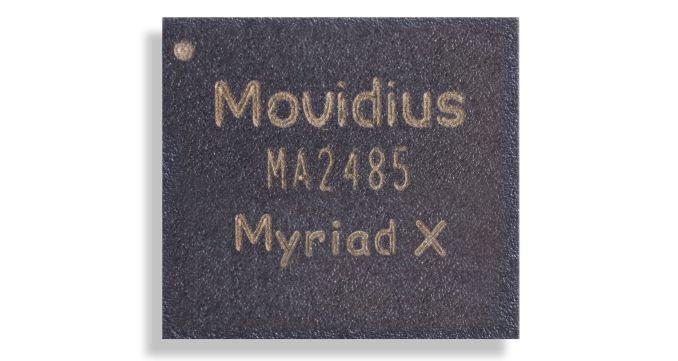

 Quote
Quote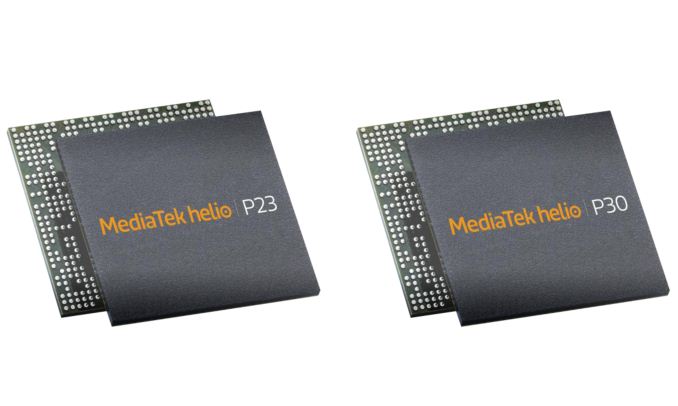




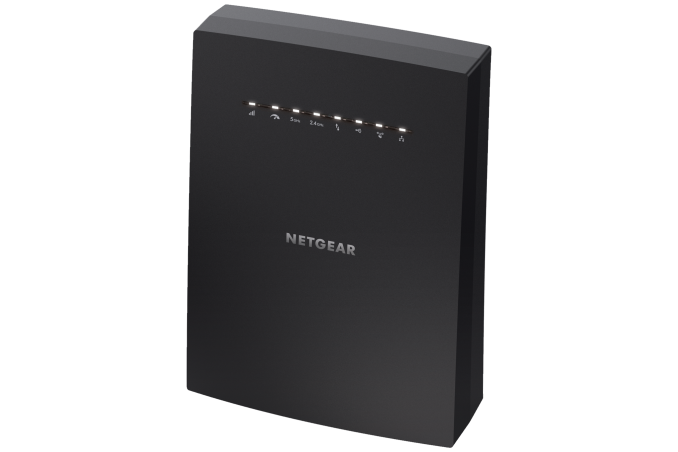

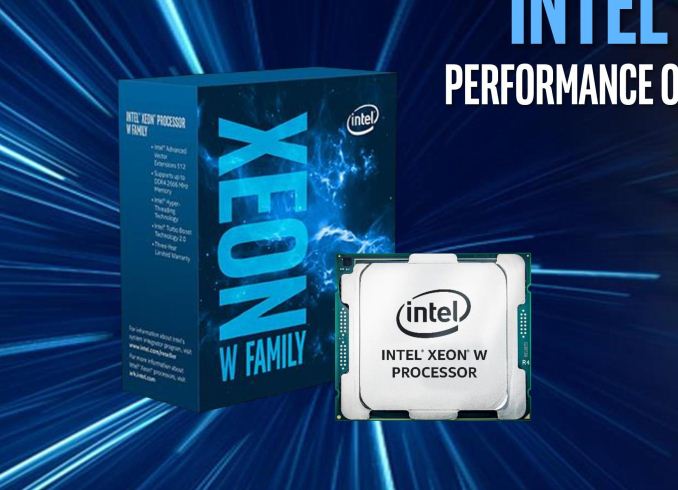
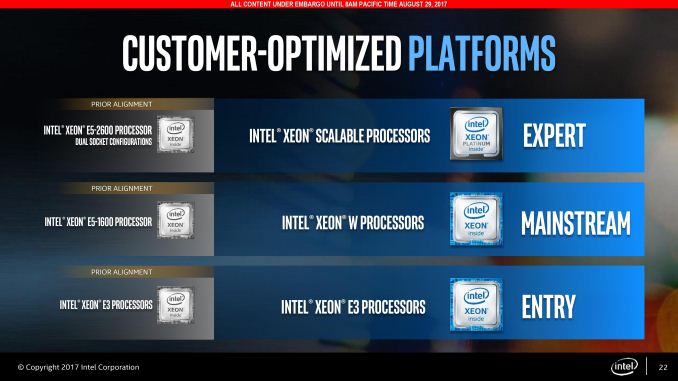


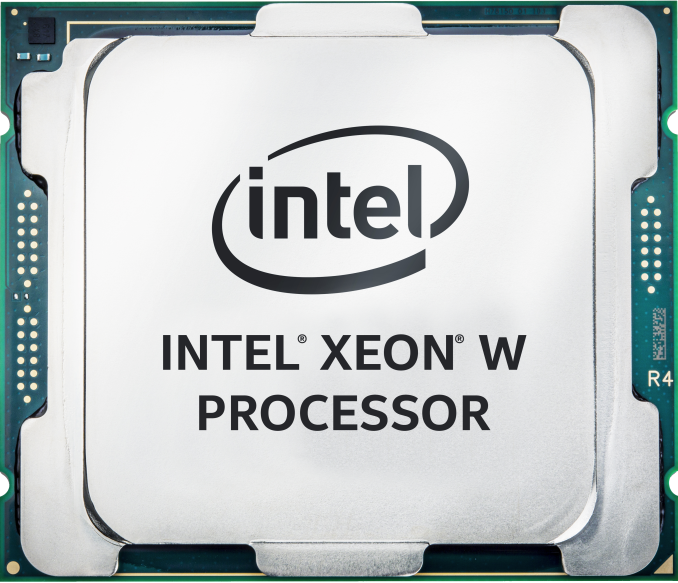







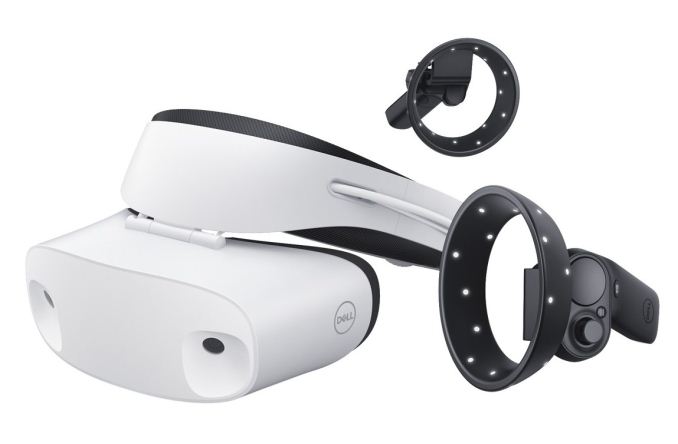




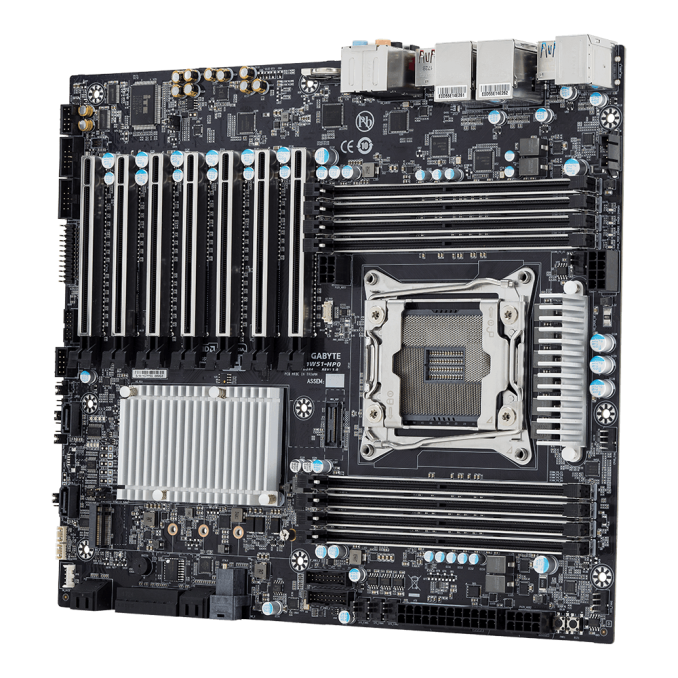
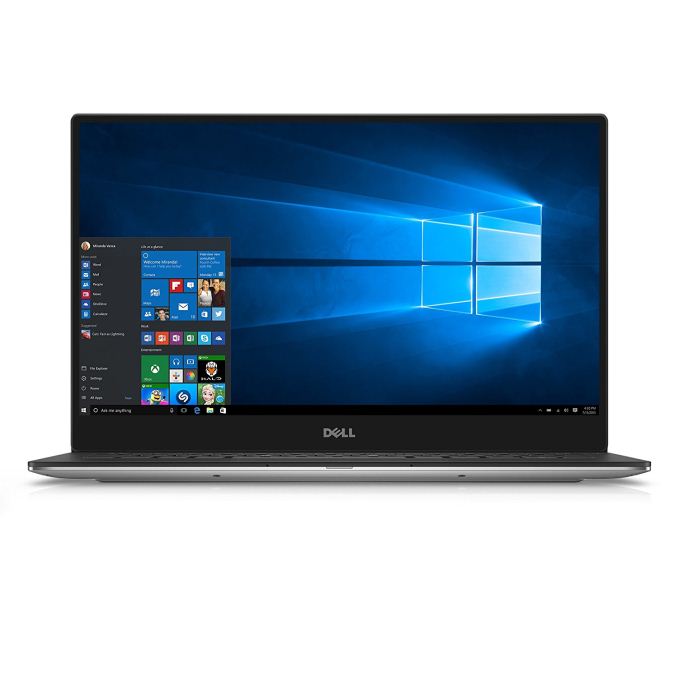
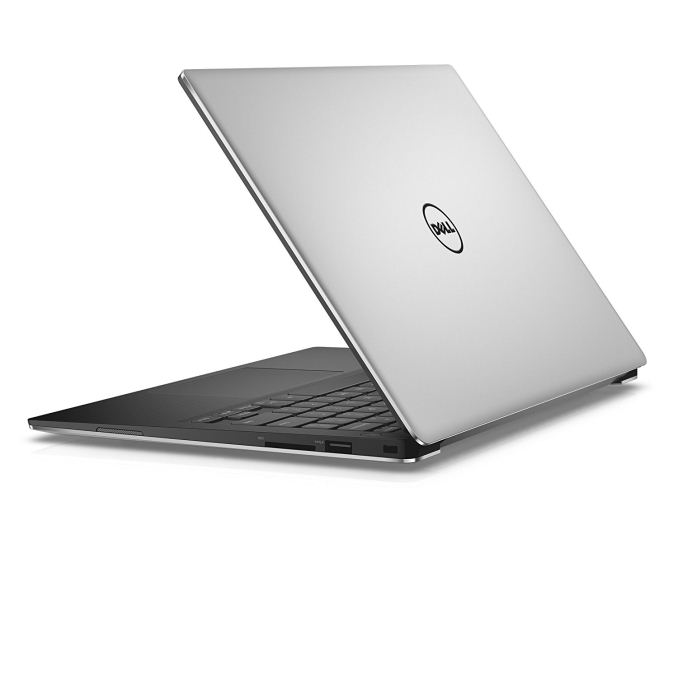
















Bookmarks